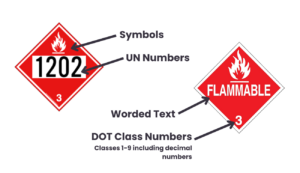Most of us have seen the recent media coverage of high-profile hazardous materials (hazmat) accidents like the train derailment in East Palestine, OH in February of 2023. Unfortunately, these incidents are becoming more common within the United States. Data from the Pipeline and Hazardous Materials Safety Administration (PHMSA) indicates that hazmat road accidents have more than doubled in the past decade.
While both highways and railways see their fair share of hazmat incidents, PHMSA data reflects that most hazmat accidents occur on the road, and they incur the greatest amount of damage.
What Action Can We Take?
The rising number of hazmat accidents presents considerable safety concerns and financial implications for entire communities. With over 2 million hazmat shipments daily in the U.S., state, local and federal governments are looking for ways to reduce hazmat accidents overall and ensure a safe response when accidents occur.
There are many ways to go about this. Since a high percentage of accidents occur due to driver error, many people are looking to updated in-cab safety features for drivers like blind spot and lane departure detection. While these features would no doubt help improve safe driving, they are often cost-prohibitive to freight companies and drivers themselves, and they cannot provide crucial localized data regarding how much and what type of hazmat shipments are passing through.
Hazmat placard readers are an equally important tool for improving local safety. Hazmat readers provide valuable real-time data about the presence and movement of hazardous materials in an area. With this data, emergency responders can properly prepare when responding to accidents, and cities and towns with high hazmat movement can implement safeguards to proactively prevent accidents.
“There seems to be a ‘knowledge gap’ regarding hazmat shipping, primarily because a lot of state, county, and local governments have no idea what type of hazmat shipments are coming across and through their boundaries,” said Perceptics Director of Commercial Vehicle Operations, Jim Rhodes. “Not knowing what is coming through a community is basically waiting for an unknown catastrophe to occur.”
What are Hazmat Readers?
Hazmat readers utilize AI to accurately read and report hazmat placard information, such as the UN/NA Number, hazmat symbol, and hazmat class, from image or video data.

How Hazmat Readers Can Improve Safety
1. Early detection and response: Hazmat readers can detect hazardous materials in real-time, allowing authorities to take immediate action to prevent a potential disaster. This can help prevent accidents, reduce the severity of incidents, and save lives.
2. Monitoring: Many communities lack reliable data on how much hazmat moves through the area on any given day, wee

k or month. Hazmat readers can monitor the movement of hazardous materials, providing baseline data for the amount and frequency of hazmat in an area. This can help prevent accidents, ensure compliance with regulations, and reduce the impact of incidents.
3. Risk assessment: Hazmat readers can help authorities assess the risk posed by hazardous materials in the area. This information can be used to develop emergency response plans, allocate resources, and make informed decisions about zoning and land use.
4. Emergency response: In the event an accident does occur, hazmat readers can provide critical information to emergency responders to help them identify the materials involved, determine the appropriate response, protect themselves and the public, and gauge the potential safety and environmental impacts.
There are many different factors involved when it comes to preventing hazmat accidents, but we believe hazmat readers are an invaluable tool for municipalities. Perceptics has been producing advanced imaging technology for over 40 years with a specialty in vehicle recognition.
If reducing hazmat incidents in your community is a priority for you, we would love to chat about how our hazmat reader technology can help you reach your goals for a safer tomorrow. For more information on our hazmat reader technology, reach out to jim.rhodes@perceptics.com.



